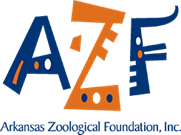Turtles & Tortoises
VULNERABLE
African Spurred Tortoise
These tortoises are the largest tortoises in Africa. They have yellow-brown skin and brown shells. Their carapaces are oval and have serrations on the front and back of the shell. They get their name due to the overlapping scales and conical spurs on their legs.
Habitat/Range:
They can be found in the southern part of the Sahara and east through Mali, Chad, the Sudan and Ethiopia to Eritrea. They prefer to live in dry desert areas
Behavior:
They spend their mornings basking in the sun to warm their core temperature after a cool night. During the dry season, they will hibernate in their moist burrows to prevent dehydration. Hatchlings will do the same.
You can tell the age of this tortoise by counting the rings on the scute of its shell!
Vulnerable. They are vulnerable due to habitat loss, over grazing of livestock, urbanization, and desertification. Juveniles are also captured for trade and because it takes them 15 years to reach maturity there is concern they will not be able to replenish their numbers in the wild.
Conservation Action:
Listed on CITES Appendix II. They are not allowed to be captured and exported from the wild. In the United States, captive bred tortoises supply the domestic pet trade. They live in some protected areas. In Senegal, there is a breeding, information and protection center. Tortoises form the Netherlands have been sent back to Senegal.
VULNERABLE
Aldabra Giant Tortoise
These large tortoises are dark-gray to brown in color with a thick domed carapace. Their limbs are short, thick and covered in scales. They also have a head and neck, which happens to be quite long, covered in scales as well. Males are usually larger than females and they have longer, lower carapaces that widen near the rear as well as a thicker tail.
Range/Habitat:
Aldabra tortoises are native to the Aldabra Atoll of the Seychelles, an archipelago nation in the western Indian Ocean. They inhabit a variety of places including scrub forests, mangrove swamps, grassy plains, coastal dunes and beaches. They can mostly be found in areas with a variety of grasses. These tortoises have been introduced to Mauritius, Réunion, and other islands in the Seychelles.
Size:
Carapace length: Male – 4 feet, Female – 3 feet. Weight: 350-450lbs.
- The wild lifespan of Aldabra tortoises is unknown. It is estimated that they can live anywhere from 100-150+ years. One zoo has reported their tortoise as being 176 years old.
- Tortoises are able to create their own unique habitat called “tortoise turf.” This is due to heavy grazing and is characterized by areas filled with a variety of grasses and herbs. Tortoises clear pathways and the grasses serve as hiding spots for smaller animals. They also aid in seed dispersal.
- There is a species of land hermit crab, Coenobita rugosus, which is dependent upon tortoise feces for food.
IUCN lists as a vulnerable species. These tortoises have dealt with threats in both the past and the present. Island tortoises were an important source of food to early sailors and many were hunted. They are presently faced with habitat loss and invasive predators. Of the three giant tortoises that are still alive in the area, they are the only ones still in the wild.
Conservation Action:
Listed on CITES Appendix II. The Seychelles Island Foundation and the Seychelles National Parks and Conservancy Act are helping to protect and manage the remaining Aldabra tortoises. The island of Aldabra was designated a World Heritage Site by UNESCO in 1982. There is a breeding program for these tortoises on Mauritius.
Stay Informed!
Enewsletter Sign-Up
Sign up to stay up-to-date on the latest zoo news, upcoming events and deals.




